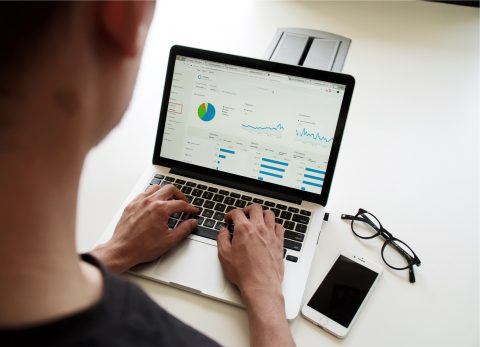When people think of ‘PR’, many conjure up images of Samantha from Sex & the City sipping on cocktails and pouring over print magazines. However, PR’s connection to SEO and digital marketing is much more measurable, strategic and focused on driving traffic and leads than its traditional counterpart.
In layman’s terms, Digital PR, also sometimes referred to as Online PR, link building or even SEO PR, is a strategy that utilises PR techniques to secure backlinks to your website within third party articles and content. In addition to raising brand awareness, at its core digital PR is about the strategic acquisition of backlinks that aid your website in ranking more competitively in search engines, thus driving more and better-quality traffic, and ultimately leads.
Traditional v digital PR: what’s the difference?
The core difference between traditional and digital PR is often more noticeable in their campaign objectives and measurements than in their day-to-day practices and outcomes.
At its core, traditional PR is all about the brand in its objective. Building it, enhancing it, propelling it and protecting it. The value is in getting messages about the brand name, services and products out and into key publications that your prospects read. Digital PR can also build brand awareness, but at its heart digital PR is also about driving traffic and leads to your website.
Digital PR dives traffic and leads by deploying the sorts of campaigns and tactics that are most likely to achieve backlinks to your website and your content. That’s because backlinks are one of the most important SEO ranking factors and can have a big impact on how well your website ranks when your prospects use search engines.

The day-to-day tactics for digital PR and traditional PR are often broadly similar, as both require the creation of PR stories, media targeting and pitching. However, digital PR can often feel and look a little different. While traditional PR may ‘go after’ the big titles that are most commonly read by your key target audiences, digital PR will seek to gain placements on websites that have the best search relevancy and pass the most ‘authority’, ‘SEO value’ or ‘link juice’ to your website.
Because of this core focus on the link, digital PR campaigns can sometimes feel less restrained by brand requirements and may look more like news editorial in nature than brand PR articles. Often, these campaigns will be joined up with pieces of ‘hero’ content to better drive links and aid SEO efforts.
There are also some other activities that are not a feature of traditional PR, such as link reclamation or broken link building, that can be deployed to gain backlinks.
Due to their differing focus and objectives, traditional PR tends to be evaluated using metrics such as unique users, impressions and readership, while digital PR can be measured in backlinks, domain authority/trust flow and search rankings.
However, some of the best digital PR campaigns go for that sweet spot by aiming to build links and brand awareness at the same time.
Why are backlinks commercially important?
Simply put, more high quality, relevant and authoritative backlinks will often lead to more and better traffic to your site from search engines and potential for leads.
This is done by strengthening the authority of your website so that it ranks more competitively in search engines for commonly search keywords. This also applies to content, with those pages that have the most backlinks often receiving the most traffic.

For example, two equally well-written articles addressing the definition of digital PR may both rank highly when people search ‘what is digital PR’. Yet, the article which has the most quality, relevant and authoritative backlinks is the most likely to rank highest in search engines. It is important to note here that the quality of your content and technical SEO also matter hugely to how well your site can rank in search engines. So if your content isn’t up to scratch, then it is unlikely to rank for relevant keywords no matter how many links its acquired.
This is why digital PR often works in collaboration with content marketing; by forming PR campaigns around well written and optimised content that is designed to rank competitively for relevant keywords.
What does a ‘good’ backlink look like?
Unfortunately, there are few one size fits all rules when it comes to determining what a ‘good’ backlink looks like.
However, the most important thing is to assess the quality of the website that you’re trying to secure a backlink on. To determine its rankings, Google crawls websites and content across the internet, with links acting almost like a web that connects sites. A link can be seen almost as a vote of confidence in your site, however if that link comes from a poor quality site it is unlikely to improve your rankings.

Key things to look out for when assessing the quality of a link:
Authoritative sites
Authoritative websites (think well-known institutions, companies or industry sites such as national newspapers) will often have strong SEO value. Metrics such as Moz’s domain authority or Majestic’s trust flow (scored from 1 to 100) will give you a good indication of this.
Look and feel / spam factor
Link metrics shouldn’t be viewed in isolation as they’re based on third party algorithms. It is important to also think about the look and feel of the site. If the site feels spammy in spite of a decent domain authority, chances are it is!
Relevant sites
Backlinks in sites that are relevant to your industry niche are also hugely important as they tell Google what your site is all about. So for example, if you’re a car manufacturer you will also want links in automotive magazines and industry relevant websites … not just in big national newspapers!
Follow links
When content editors and journalists link to other websites they have the option to classify that link as ‘no follow’ in the HTML to protect their site. In laymen’s terms, no follow links are a way for those editors to tell Google that they are not necessarily endorsing or passing on authority to the website that they’re linking to. Up until the end of last year, it was widely believed that search engines followed these signals. However Google has since clarified that it doesn’t necessarily discount a ‘no follow’, and uses its own algorithm to make decisions on which links to ‘count’. Regardless, its often best to go for good sites that carry follow links if you can!
Editorial focus
Increasingly, aspects of where the link is placed matter. For example, too many spammy links with poor anchor text on the page are unlikely to fool Google. For this reason, links from sites like low quality directories or blogs can be less valuable, with editorially placed backlinks often holding the most ‘SEO power’. That’s why digital PR is often most effective when based on story creation and campaigns that utilise traditional PR tactics.
How do I secure valuable backlinks?
There are many ways to secure backlinks, however it is most important to note that backlinks are earned and not bought.
Paid for links are often labelled as promotional, meaning they lack SEO value, and securing the most valuable links on national and industry news sites often requires … creating national or industry news!

How you can generate these backlinks will depend hugely on the context of the website or business you are looking to promote. However some tactics include:
- Newsjumping and newsjacking
- Thought leadership and opinion articles
- Hero content campaigns
- Data or insights led PR stories
- Newsworthy company announcement or launch
- Multimedia led PR pitches
- Online PR stunts
- Targeting existing editorial slots
- Reviews
- Press releases and pitches
These are just a few of the digital PR tactics that can be deployed, and ultimately the right strategy is normally highly dependent on the site and business.
Measuring digital PR success
Digital PR and traditional PR often differ significantly when it comes to measurement owing to the fact that they are trying to achieve different things. While traditional PR tends to look at metrics related to a publication’s reach and audience, digital PR also looks at how it influences search rankings and the authority it builds to your website and content. There is no one size fits all measurement tool for digital PR. Rather, it is better to look at a combination of metrics against your campaign objectives.

These can include:
Changes in domain authority or trust flow
Metrics such as these give you indications on how ‘authoritative’ your site may be in the eyes of search engines. It is important to note that as these are third party tools, and while they’re very useful, they’re not infallible. They can also be quite slow to move/update, meaning you may be waiting a long time to see significant increases in these metrics after link building campaigns. For these reasons it is often best to take these metrics as what they are – an indication – and view them in collaboration with other measures rather than in isolation.
Backlinks and referring domains
While backlinks refer to the number of overall links pointing to your website, referring domains refers to the number of websites or domains pointing to your site. These two measures can differ seeing as any one site could be linking to your site multiple times and from multiple pages. On the face of it a rise in backlinks is generally good while a drop in backlinks may be bad for your rankings. However it is also important to use tools such as Ahrefs, Majestic and Moz to analyse the distribution and relevance of these links. You’re looking for increases in relevant, authoritative links, so you may want to set KPIs and do evaluation based on increases in these types of backlinks.
Search rankings and page authority
If a PR campaign’s aim was to improve how well a site ranked for a particular set of keywords (rather than to build up the overall authority of the site) then it may be appropriate to look at page authority, backlinks and search ranking changes. By building links to a specific page, digital PR professionals can help that page to rank higher in the SERPs. The number of backlinks pointing to that page and its page authority (similar to domain authority, but an authority metric attributed to a specific page) indicate the authority built to that page and its likely ability to rank competitively. However, performance can also be evaluated by looking at whether the average ranking position for that page has increased for the relevant key terms – and whether clicks, impressions and leads have increased too!
Referral traffic and attribution modelling
Links built to content via digital PR can also introduce new users to your site when they click on a link to your content from a third-party website. Although it is not common for links to introduce large volumes of traffic to a site, they can add valuable leads when placed in quality and well-read media publications. Using Google Analytics, it is possible to track referral traffic from these links and make conclusions about the sorts of sites that tend to drive this traffic. It is also possible to use attribution modelling to determine what role your content or PR coverage/link has played in a conversion and where along the customer journey your placement was crucial in aiding the conversion. These insights enable us to identify and include these high value sites in our PR campaigns, with long term objectives to secure them.
Read more about digital PR or content marketing to find out how backlinks and quality content can help build your website’s authority and drive traffic and leads.







Leave a Reply